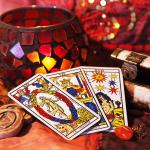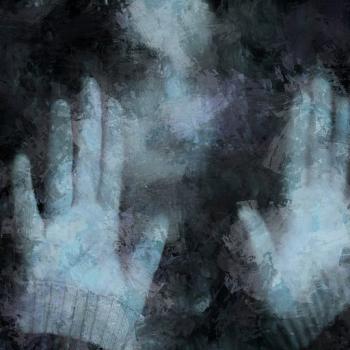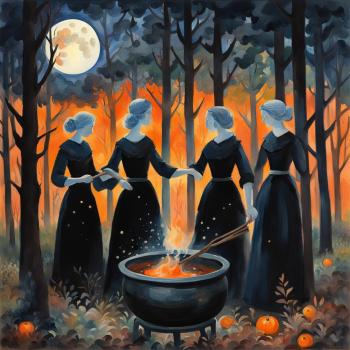Not long ago, I was given the opportunity to write a book. I nervously pitched my idea to write about Mexican-American folk magic to Weiser Books and to my surprise and joy they accepted my manuscript for publishing. Through the process of writing the book I realized that I needed a more succinct way to describe what it is I was talking about. After all, “modern day folk magic practiced by the descendants of Mexico who have immigrated and now live on American soil” is a lot to repeatedly type and it’s even less fun to read six times in a paragraph. So, I needed something to call it. It had to be accessible and pronounceable, but also describe what I’m talking about. In the end I decided I had to coin my own term and opted to call it “American Brujeria”.
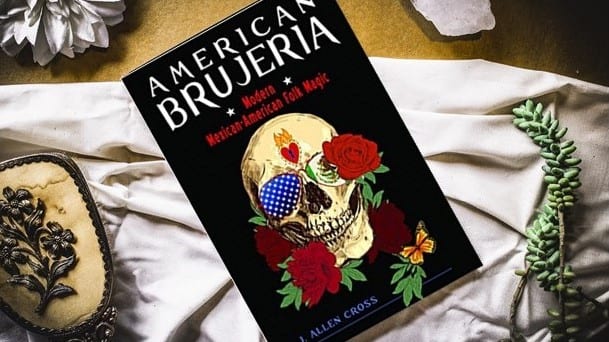
Some folks will read the title and intuitively know exactly what I’m talking about. Others will take a single glance and then wildly misinterpret what I’m trying to say. Due to this, I’ve decided to come here and explain what I mean by American Brujeria, and why I chose this term. Let’s begin…
What is American Brujeria?
American Brujeria (brew-hair-EE-yuh) is essentially the folk magic that has been brought to the United States by Mexican immigrants. This work includes the lighting of novenas, calling upon saints, the veneration of Our Lady of Guadalupe, spiritual cleansing through “limpias”, and the casting of spells or “hechizos”. Since folks began crossing the border into the US they have brought with them ancient wisdom, powerful spirits, techniques for healing and harming, and more. All of these bits and pieces of Mexico’s deeply spiritual beliefs that were carried over on the backs of immigrants ended up being put into a large pile mixing together into a singular practice that sustained our people over the years as folks now living in a foreign country. These were passed down through the generations, and is ultimately how we ended up with American Brujeria
This work is informed by traditional Brujeria (see below), Catholic belief, Aztec legend, Curanderismo (Mexican healing arts), and Hechiceria (sorcery). The practical and most utilitarian parts of these practices are what tend to survive in the US as they are the parts that are most heavily leaned upon. What’s more is that these have become so ingrained in our culture as Mexicans that we often don’t see these things as strange or in any way “magical”; it’s just what you do. It’s only after we really start to look around and examine our traditions that we realize how much magic we as Mexican and Mexican-American folk are surrounded by every day. Italian and African cultures are much the same.
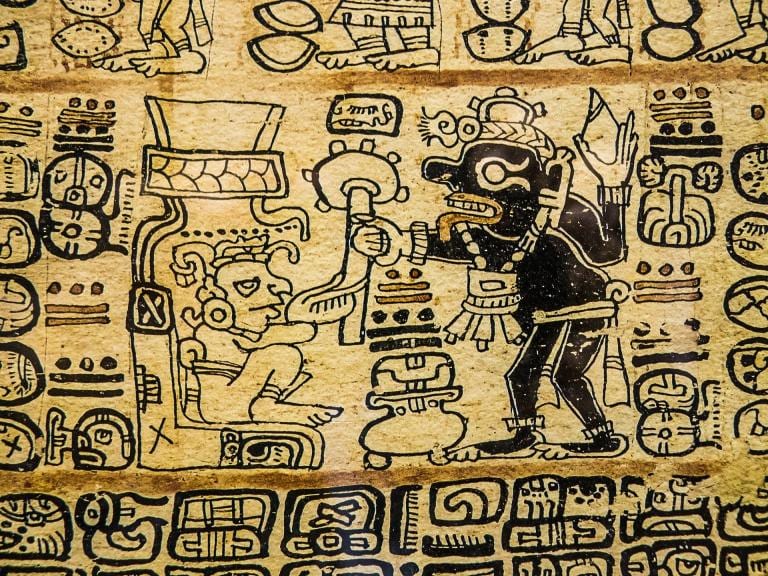
Furthermore, American Brujeria has a habit of finding its way into the hands of Latinx folks living in the US, and many people begin to do it without even realizing it. Especially among our young folks, there seems to be a big call happening, drawing Latinx youth back to their culture, and traditional magical practices. It is also common among Latinx youth to refer to this work as “Brujeria” as a half joke with deadly serious undertones. Make no mistake, this work is powerful and should not be handled lightly.
How are American Brujeria and traditional Brujeria different?
Real traditional Brujeria is a very secretive tradition that very few people are allowed access to. You must be mentored by a real Brujo/a and it is not a type of magic that you handle lightly. If you speak to your Mexican or Latinx friends most of us have family stories about Brujas. In researching this book I heard all kinds of astounding tales of people flying, or transforming into creatures like owls and jaguars. This magic is very real and very powerful. Furthermore, traditional Brujeria has very little to do with novena candles and saints; that is more of what we call Hechiceria (eh-chee-suh-REE-uh) or “sorcery”. However the latter term is much less known, especially in the US, and therefore seldom used.
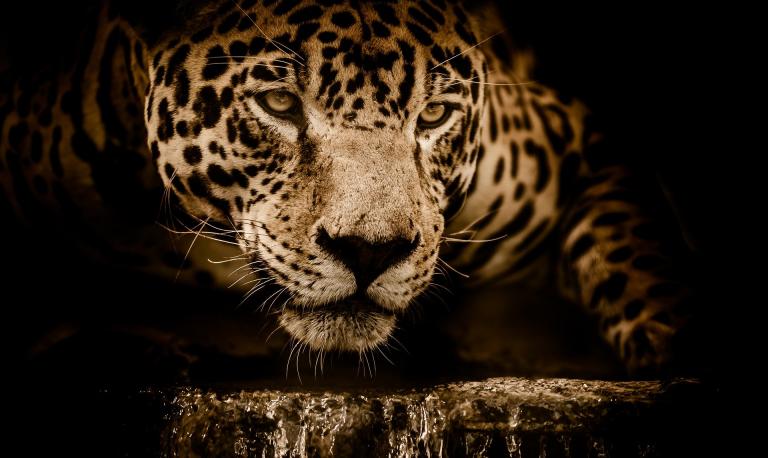
When you ask Mexican-American folks what this mixed bag of Mexican folk magix is called, they will often refer to it as “Brujeria”, again, sometimes as a joke, but it’s what we continue to call it nonetheless. While this is traditionally inaccurate there is a large tendency for folks to diverge from tradition after immigration. Much like how you have Voodoo, Haitian Voodoo, Puerto Rican Voodoo (Sanse), and New Orleans Voodoo. Still, it would be damaging to my culture to write a book on “Brujeria” that is not actually about real Brujeria. I wanted to help preserve the meaning of “Brujeria” and I wanted to differentiate between the traditional kind and what we call “Brujeria” here in America. Thus, American Brujeria was born.
The Word Brujo/a/x
In the United States there is a tendency for Latinx folks who practice American Brujeria style of magic to refer to themselves as Brujas (female witches) or Brujos (male witches) or Brujx (American gender-neutral term for witch). This creates a bit of a separation that can be hard to traverse when it comes to Mexico-style or American-style that really needs to be discussed and understood if we are going to call ourselves by these titles.
The first thing we have to understand is that the words mean different things depending on where you are geographically. In Mexico there is a lot of fear surrounding Brujas and Brujos and if you say you are one of those, folks will immediately try to distance themselves from you (if not literally run away). You have to be careful how you use this word because in the US our understanding of the word “witch” is very dewy-eyed and we often understand witches as “spiritual healers who love the earth”.

Meanwhile, if you tell someone you are a Bruja/o, you are telling them that you like to fly through the night and steal babies and eat them. Our understandings of these words differ. In the United States however, if someone calls themselves a Bruja/o/x they are simply saying that they practice a Mexican/Latinx style of magic. It’s also considered incorrect in traditional Mexican culture to refer to yourself as Bruja/o if you are not practicing real Mexican Brujeria. Those who practice American Brujeria would more correctly call themselves Hechicero/a/x, however most folks favor Brujo/a/x as a personal title.
Language is complicated and the meaning of words changes across geographical landscape, periods of time, and regional dialects. Due to this, I don’t think it’s inherently wrong to use the term Brujo/a/x to describe a person who works in American Brujeria as long as you understand the nuances and roots of the term, and understand that there is a time and place where it is best to not use the word.
I hope this crash course in American Brujeria cleared up some misconceptions or concerns you may have had about the term and where it came from. For more information on this style of work, please pre-order my new book American Brujeria on Amazon or Bookshop; it will be released May 1, 2021.



